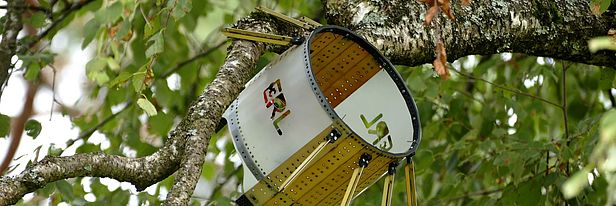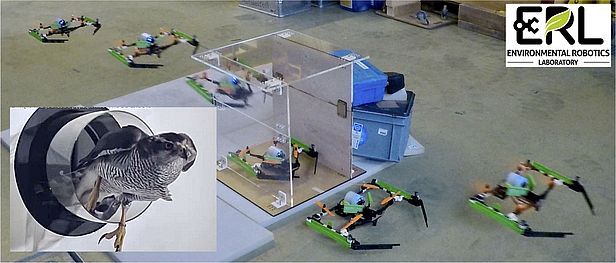CYbER - Canopy Exploration Robots
Christian Geckeler
Steffen Kirchgeorg
Emanuele Aucone
Luca Girardi
2021 - 2025
Cooperation Financing
In the CYbER (CanopY Exploration Robots) project we study the science and technology of new multi-modal robots for comprehensive canopy exploration. The goal is to develop semiautonomous robots to navigate within forest canopies, and to collect images and biological samples at different spatial and temporal scales. In doing so, we will address key scientific questions on multi-modal locomotion, perception and soft manipulation necessary to interact with complex natural environments.
Under this link you find our group page for the Environmental-Robotics Lab.
HEDGEHOG ¶
Drones can reach high and remote areas, yet the limited flight time restricts the data collection to short time periods. In addition, the sound of the propellers can cause a vigilant or even fearful response for some wildlife, possibly scaring the animal away. With a protective cage and multiple spines, HEDGEHOG can safely reach and perch on branches. At rest, the propellers shut down to reduce power consumption and noise, allowing longer and less intrusive data collection. The passive perching mechanism is based on origami spines that, once in contact with the surface of a branch, create sufficient friction to support the weight of the hanging platform. Soft design allows the spines to adapt to branches of different shapes, sizes, and inclinations. After successful perching, the drone can take off as the spine releases from the branch once the load is removed.
A study published on Robotics & Automation describes it in greater detail.
The HEDGEHOG drone flies onto a branch. Clinging to it, it turns off the propellers to discreetly make audio and video recordings about the environment in the tree canopy. Video English, subtitles German.
SQUASHY ¶

Because of their mobility and versatility, there is growing interest in developing drones for remote exploration of dangerous and difficult-to-access environments. However, the locomotion strategies and the rigid frame of current drones make access to confined spaces a daunting challenge. In narrow crevices, propellers generate destabilizing aerodynamic turbulence or may simply not have enough room to rotate, increasing the risk of collisions exponentially. Inspired by birds negotiating narrow gaps in forests, we developed a quadcopter capable of traversing long passageways that are 35% smaller than the size of the drone. Thanks to a soft, adaptable frame, the drone can squeeze into tight spaces and use its side tracks to crawl through them. This new generation of soft drones with multi-modal mobility will allow access to the most remote and dangerous places for and environmental monitoring, search and rescue missions, inspection of ageing infrastructures.